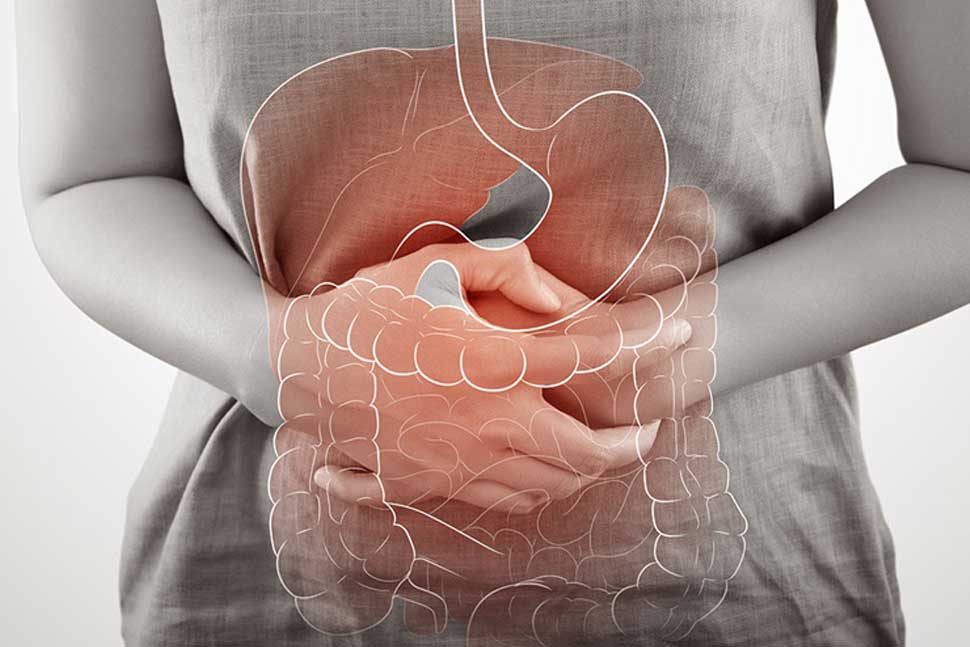Get 10% Additional Off on all our products. Limited time offer.
Uncategorized
March 29, 2024
By lumiara-admin

Your reflection in the mirror can often mirror your gut health. The appearance of your skin can offer valuable clues about your internal well-being. When your skin is acting up, it might be a signal to investigate your gut health.
After all, beauty is more than skin deep. And nothing is more true when it comes to your skin. To achieve glowing skin, you must look within.
Delve into understanding the gut-skin axis to tackle the root cause of skin issues. And learn how to nourish your gut for healthier, radiant skin.
The gut-skin axis is like a two-way talk between your stomach and your skin. It’s all about how your gut, which is your stomach and intestines, talks to your skin and vice versa.
This communication stems from the tiny organisms called bacteria living in your gut. They are known as the gut microbiome. These bacteria in your gut are super important because they affect how your skin behaves.
The gut microbiome is highly important for many functions in the human body. It is crucial for digestion and nutrient absorption. And plays a vital role in the function of the immune system.
Beneficial bacteria in the gut can help maintain skin health. They lessen immune responses and reduce inflammation. But, an overgrowth of bad bacteria can be harmful to the body, and our skin.
Imbalances in the gut microbiome are known as dysbiosis. It can lead to inflammation and immune system dysfunction. This is often associated with skin conditions such as acne, eczema, and psoriasis.
Recent research is proving how important gut health is, especially when it comes to some of the most common inflammatory skin conditions.
Proving how intertwined the relationship between the gut and skin truly is. And how problems with gut health can exaggerate problematic skin.
Studies have found correlations between gut dysbiosis and acne. This suggests that imbalances in gut bacteria may exacerbate inflammation and hormonal imbalances. And that an unhealthy gut microbiome can contribute to acne development.
Individuals with eczema often have altered gut microbiota composition. Research indicates that probiotics and dietary interventions improve gut health. They can help reduce symptoms of eczema.
There is evidence supporting a link between psoriasis and the gut microbiome. A link has been discovered connecting gut dysbiosis, immune dysregulation, and psoriasis flare-ups.
A study found a connection between the gut microbiome and Rosacea. Small Intestinal Bacteria Overgrowth (SIBO) was ten times more prevalent in Rosacea patients.
Several factors can disrupt the relationship between the gut-skin axis. These include:
A diet high in sugar, and unhealthy fats can disrupt gut microbial balance. Essentially highly processed foods. They can contribute to skin inflammation.
Stress can also impact the gut-skin axis. It does so by triggering hormonal changes and altering gut motility and permeability.
Certain medications can disrupt the balance of the gut microbiome, such as antibiotics and nonsteroidal anti-inflammatory drugs (NSAIDs). This can potentially affect skin health.
Not only does improving gut health prove beneficial for digestive health. It is also the key to promoting clear, glowing skin. And thankfully there are ways to restore your gut to health. All white provides beauty-boosting benefits to your skin.
Incorporating a wide variety of nutritious foods provides beneficial bacteria for the gut. Include probiotic and prebiotic-rich foods to restore your gut-skin axis.
Chronic stress can cause havoc on the gut-skin axis. It’s important to manage stress levels and reduce it where possible. Manage stress with:
Introduce healthy, good bacteria back to your gut easily with a daily probiotic. Taking Rise each morning can bring your gut and skin back to life. Improving diversity in the gut for better digestion. All while making your skin clearer, brighter, and more radiant.
The gut-skin axis highlights the intricate connection between gut health and skin health. It can be easily upset by lifestyle factors. But thankfully, it’s easily restored.
You can nurture your gut microbiome and promote optimal skin wellness. All by adopting lifestyle habits that support gut health. Eating nutritious foods, reducing stress, and taking probiotics.
Remember, a healthy gut equals a healthy skin. If we want to look good on the outside, it’s all about feeling good on the inside. Nourish your gut for your skin to flourish.
https://onlinelibrary.wiley.com/doi/abs/10.1111/ijd.15862
https://www.ncbi.nlm.nih.gov/pmc/articles/PMC9318165/
https://zoe.com/learn/gut-health-and-acne
https://www.medicaljournals.se/acta/content/html/10.2340/00015555-2968
The Gut Microbiome is a Major Regulator of the Gut-Skin Axis – PMC (nih.gov)
* These statements have not been evaluated by the Food and Drug Administration. This product is not intended to diagnose, treat, cure or prevent any disease.
© Lumiara. All rights reserved.